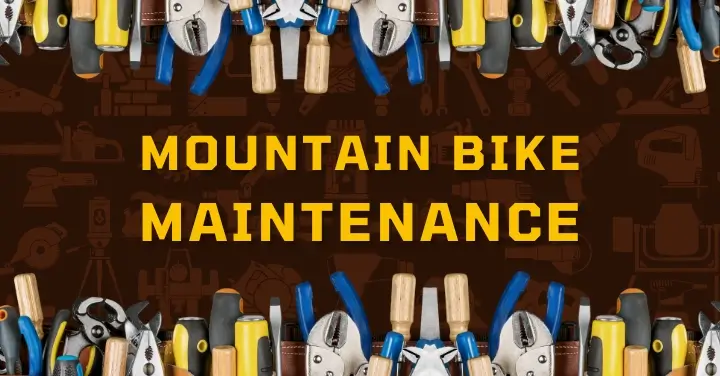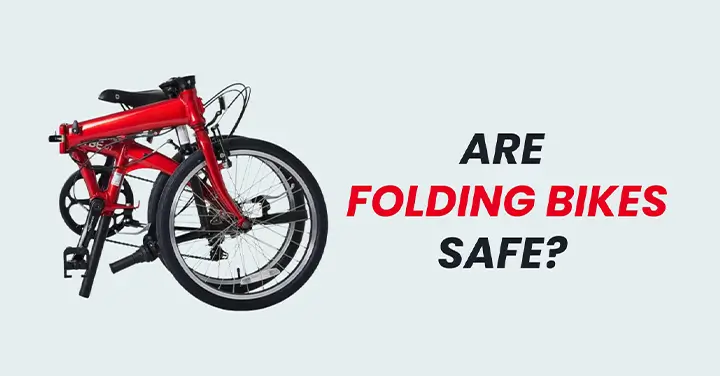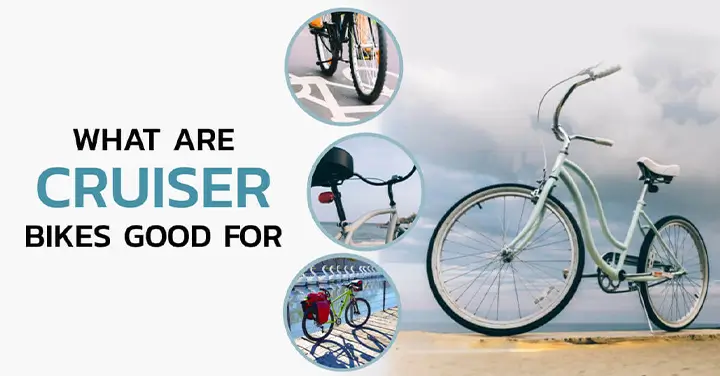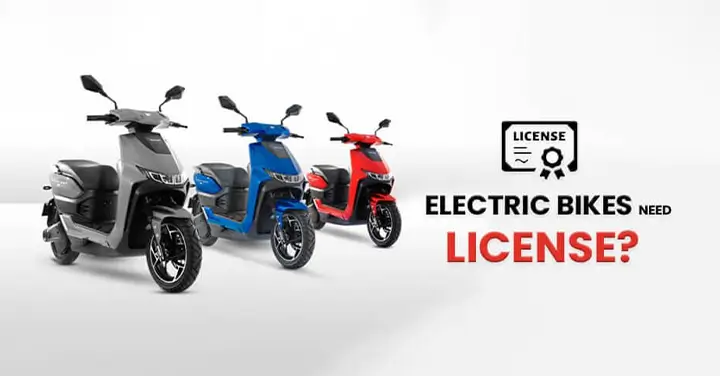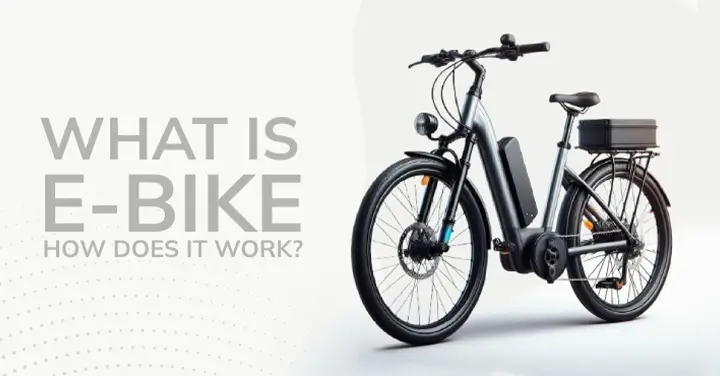Table of Contents
Mountain biking is an exciting activity where you can ride through challenging landscapes and appreciate the beauty of the nature. However, the sport does put a lot of stress on your bike. Performing regular maintenance and care for your mountain bike is essential to keep it in optimal running condition, avoid mechanical issues on the trail, and extend its lifespan.
The key benefits of regular mountain bike maintenance include:
- Improved safety – Well-maintained brakes, drivetrain, and suspension reduce the risk of crashes and injury. Worn components can fail unexpectedly.
- Better performance – A clean, lubed, and tuned drivetrain will shift smoother. Adjusted brakes will stop you with more control. Smooth suspension improves handling and comfort.
- Fewer breakdowns – Catching issues early prevents bigger problems. Regular maintenance reduces the chances of being stranded trailside due to things like broken chains or flat tires.
- Longer component life – Cleaning and lubricating parts reduces wear and tear. This saves you money by getting more miles out of drivetrain components, brake pads, tires, etc.
- Preserved investment – Taking good care of your bike maintains its performance and value over years of riding.
The upcoming sections will outline essential maintenance tasks to guarantee the safe operation of your mountain bike and efficiently throughout many seasons of trail riding. Investing some regular time into bike care will maximize your enjoyment of the sport.
Regular Cleaning
Keeping your mountain bike clean is one of the most important maintenance tasks. A quick cleaning after every ride will help prevent damage and keep your bike running smoothly for years to come.
Rinsing Your Bike After Every Ride
After every ride, you’ll want to rinse your bike with water to remove any mud, dirt, or debris. Pay special attention to the frame, wheels, drivetrain, and other components. Using a gentle spray from either a hose or bike washer is optimal. Avoid high pressure washers as they can force contaminants into bearings and other sensitive areas.
Thorough Post-Ride Cleaning
For a more thorough post-ride cleaning, use a bike-specific cleaner and a soft bristle brush to scrub the frame, fork stanchions, shock body, cassette, chainrings, rotors, and other dirty areas. Quality bike cleaners like Pedro’s Bike Lust or Muc-Off Bike Cleaner will quickly break down grime without damaging finishes or parts.
Cleaning the Drivetrain
The drivetrain takes the most abuse, so regular cleaning is critical. Wipe down the chain, cassette, derailleurs, and chainrings with a rag and degreaser to remove built-up grime. Then apply a light lube to prevent corrosion. The frequency depends on how often you ride and trail conditions, but aim to degrease and lube the drivetrain every 100-200 miles.
Maintaining Disc Brake Rotors and Pads
For disc brake rotors and pads, remove any embedded debris or glazing using isopropyl alcohol. This keeps them clean and avoids brake noise. Inspect the rotors for signs of damage too.
Final Touches
Finish by wiping down pivot points, shock bolts, and other greased areas. This prevents grit from contaminating the grease. Your mountain bike will then be sparkling clean and ready for your next adventure!
Drive Train Maintenance
The drive train includes the components that transmit power from the pedals to the rear wheel – the chain, cassette, derailleurs, and crankset. Keeping your drive train clean and lubricated is crucial for optimal shifting and pedaling efficiency.
- Chain cleaning and lubrication – The chain quickly accumulates dirt and grime which accelerates wear. It’s recommended to clean the chain every 100-200 miles with a chain cleaning device or degreaser. Allow it to dry fully, then apply a light coat of bike-specific chain lube. Wipe off any excess lube. This keeps the chain running smoothly without attracting extra grime.
- Cassette and chainring care – The cassette (rear gear cluster) and chainrings (front gears) should be cleaned with a degreaser and stiff brush periodically. Check for bent, worn, or broken teeth that may require replacement.
- Replacing worn parts – Chains, cassettes, and chainrings wear over time. A good rule is to replace the chain once it reaches 0.5-0.75% elongation. The cassette and chainrings usually need replacement after 2-3 chains. Quality components last longer if you stay on top of maintenance. Replace parts before they damage each other through excess wear.
Brake Maintenance
Proper brake function is crucial for safe mountain biking. Maintaining your brakes should be a regular part of your bike maintenance routine.
Pad Replacement
Brake pads gradually deteriorate with use and require periodic replacement. The frequency depends on your riding style and conditions. Aggressive riding in wet/muddy environments will wear pads faster. Inspect pads regularly and replace when worn down to 1-2mm thickness. Replacing both pads at the same time is recommended for optimal braking performance.
Bleeding Brakes
Over time, air bubbles can enter brake lines, causing a “spongy” brake lever feel. This indicates the need to bleed the brakes, which flushes the old fluid and bubbles out. Kits are available for both hydraulic and mechanical (cable) systems. Follow manufacturer instructions for the bleed process. This typically involves draining old fluid, refilling with new fluid, and “pumping” the lever to purge air out.
Adjusting Brakes
Brake levers and calipers may need adjustment to maintain proper pad clearance and lever feel. For hydraulic brakes, use the barrel adjuster to dial in the right lever pressure and pad clearance. Cable brakes have barrel adjusters on the lever and caliper for fine tuning. If adjustments don’t solve issues like rubbing pads or poor lever pressure, the cables may need replacement. YouTube tutorials are helpful for learning adjustment techniques.
Suspension Maintenance
Proper suspension maintenance is crucial for keeping your mountain bike running smoothly on the trail. The suspension takes a beating from rocks, roots, and bumps, so it needs regular service and adjustment.
Fork/Shock Service Intervals
Most suspension forks and rear shocks should be fully serviced every 100-125 hours of riding time. This involves a complete tear down, cleaning, lubrication, replacement of seals/bushings, and reassembly. Doing this service regularly prevents damage and extends the life of your suspension components.
Fork and shock oil should also be changed more frequently, about every 50 hours of ride time. An oil change keeps the damping performing smoothly.
Lubricating Components
All suspension pivot points should be lubricated frequently to prevent wear and binding. Use a light oil or suspension grease on pivot bolts, linkage bearings, shock mounting hardware, etc. Wipe the components clean before applying fresh lube.
Stanchions on fork legs also need lubrication. Use a spray-on stanchion lube or brush on fork oil to prevent dirt buildup and keep the fork sliding smoothly. Reapply after every ride or two.
Adjusting Sag/Rebound
Properly setting sag allows the suspension to travel through its designed range of motion and provides better handling. Sag refers to the amount of compression from a rider’s weight. Generally 15-30% sag is ideal for mountain bikes. More sag provides a plusher ride while less sag is more efficient for pedaling.
Rebound regulates the velocity at which the fork and shock extend following compression. Faster rebound is livelier while slower rebound provides more control. Adjust rebound to suit riding style and trail conditions. Too slow can feel harsh while too fast causes uncontrolled bouncing.
Set sag and rebound according to manufacturer guidelines. Make adjustments with the blue compression and rebound dials on forks and shocks. Test settings on a familiar trail to dial in the ideal suspension feel.
Tire Care
Proper tire care is essential for mountain bike performance and safety. The main aspects of tire care include:
Tire Pressure
- Check your tire pressure before every ride. Recommended pressure is printed on the tire sidewall. Use a quality floor pump with an accurate gauge.
- Under-inflated tires can cause pinch flats, sluggish handling, and increase rolling resistance. Over-inflated tires provide less traction and control.
- Adjust pressure depending on terrain. Use higher pressure on smooth trails and lower pressure for technical terrain.
- Changes in temperature can also impact pressure. Check and adjust accordingly.
Rotating Tires
- Rotate your tires every few months to promote even wear.
- Switch the front tire to the rear and vice versa.
- Check that the directional arrow points forward after rotating.
- Inspect tires thoroughly while rotating for cuts, embedded debris, or excessive wear.
When to Replace Tires
- Replace tires once the tread depth is very low. Use a penny test, replace if Lincoln’s head is not visible when inserted in the tread.
- Look for cracks or bulges in sidewalls. This can indicate tire dry rot.
- If a tire gets a large gash that cannot be patched, it should be replaced.
- Replace tires at least once per season depending on your riding frequency and conditions.
- Consider a more aggressive tire for the front if the rear tire wears out first.
Proper tire maintenance helps improve performance, extend tire life, and prevent flats or blowouts on the trail. Regularly caring for your tires is a key aspect of mountain bike maintenance.
Bearing Maintenance
Bearings allow smooth rotation between moving parts on your mountain bike. Proper bearing maintenance is crucial for optimal bike performance and longevity.
You’ll need to periodically service the bearings on your bike, including wheel hubs, bottom brackets, headsets, and suspension pivots. The service schedule depends on riding frequency, conditions, and bearing quality. As a general guide, hub and bottom bracket bearings should be cleaned and re-greased every 6-12 months. Headset and suspension pivot bearings may only need annual service.
Signs that your bearings need replacement include grittiness or roughness when spinning, play or sloppiness, seized bearings that won’t spin freely, and strange noises while riding. Bad bearings will negatively impact shifting, braking, and suspension performance.
Replacing cartridge bearings on hubs and bottom brackets is straightforward. Press fit bearings will require special tools for removal and installation. Headset and suspension pivot bearings may need to be serviced by a bike shop. Quality sealed bearings should provide multiple years of use before needing replacement.
Proper bearing maintenance will lead to smoother rolling, better bike handling, and extended component life. Stay on top of servicing your bearings based on your riding frequency and conditions.
Bolt Inspection
One of the most important maintenance tasks for your mountain bike is regularly inspecting and tightening key bolts. Over time, bolts can loosen from vibration while riding on rough terrain. Loose bolts can lead to critical parts coming loose, so it’s essential to periodically check and tighten them.
Some of the most important bolts to regularly inspect include:
- Stem bolts – These clamp the handlebar stem to the steerer tube. If they come loose, you may lose control of the front wheel. Recommended torque is 4-6 Nm.
- Seat post clamp bolt – This clamps the seat post in the frame. If it’s loose, the seat can suddenly shift while riding. Torque to manufacturer specs, usually around 5-8 Nm.
- Brake caliper bolts – These hold the brake calipers onto the frame or fork. Loose brakes are extremely dangerous. Tighten to 8-10 Nm.
- Derailleur hanger bolts – These hold the rear derailleur onto the frame. Loose derailleurs can cause poor shifting and damage. Tighten to 5-8 Nm.
- Suspension pivot bolts – Pivots connect suspension parts like swing arms. Loose pivots can damage frames. Follow manufacturer torque specs.
Get in the habit of using a torque wrench and checking all major bolts before every ride. This takes just a few minutes but can prevent accidents and damage from loose bolts working free while riding. Periodically inspecting and properly tightening bolts is one of the easiest ways to extend the life of your mountain bike and keep it running safely.
Frame Care
Taking care of your bike’s frame helps ensure it lasts for many miles and maintains its good looks. Here are some tips for keeping your frame in top shape:
Cleaning the Frame
- After every trip, make sure to clean the frame using a damp cloth and remove dirt, mud, and grit that can scratch the paint or damage the surface. Pay close attention to hard-to-reach areas like the rear triangle and underside of the down tube.
- For a deeper clean, use a bicycle-specific degreaser and use a gentle brush to cleanse the frame thoroughly. This helps dissolve caked on grime. Avoid high pressure water sprays that can force contaminants into bearing areas.
- Rinse the frame thoroughly after using degreaser. Wipe it down with a dry towel to prevent water spots.
Protecting the Paint and Finish
- Apply frame wax or polish every few months to shield the paint from UV rays, road grime, and moisture. Buff it to a shine.
- Touch up any paint chips as soon as you notice them. Left untreated, they allow moisture and dirt to get under the surface leading to further damage. Use touch up paint that closely matches your frame color.
- Consider applying protective tape or guards to high impact areas like the downtube, chainstay, and seatstay. These absorb dings and scratches so your frame doesn’t have to.
- Store your bike inside or use a bike cover outside to prevent sun fading and water damage to the frame over time.
With some simple regular care, your frame can stay looking great for many seasons. A well maintained frame also holds up better to the stresses of riding.
Conclusion
Routine maintenance is crucial for ensuring your mountain bike in top working condition and ensuring safety on the trail. By following the maintenance tasks detailed in this guide, you can extend the life of your bike components and reduce the need for expensive repairs down the road.
The key maintenance tasks to remember are cleaning and lubricating the drive train after every ride, checking brake pads for wear, servicing the suspension according to manufacturer recommendations, maintaining proper tire pressure and inspecting for damage, and checking bearings and bolts for tightness.
Taking the time to care for your mountain bike will keep it running smoothly for many miles of happy trail riding. The benefits of regular maintenance include:
- Improved shifting and drivetrain efficiency
- Optimized braking power and modulation
- Enhanced suspension action and control
- Reduced rolling resistance and better traction from well-maintained tires
- Decreased mechanical problems from damaged or worn components
- Increased riding safety and confidence on rough terrain
Caring for your mountain bike may take a little extra time but is well worth the investment. With a consistent maintenance routine, your bike will deliver reliable performance ride after ride. The added peace of mind and Safety enables you to fully relish the excitement of mountain biking.


